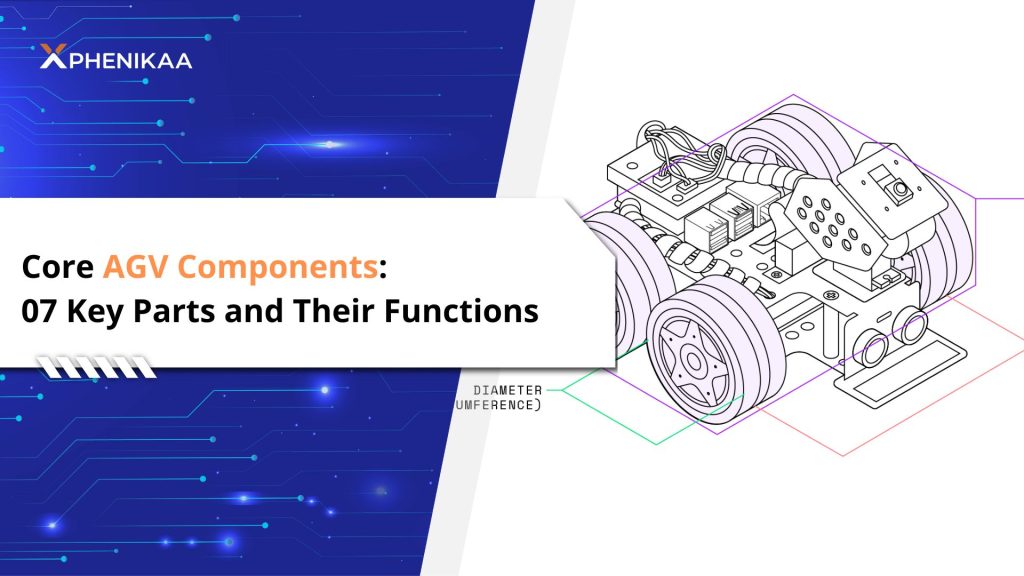AGV robots can streamline transport tasks in warehouses, factories, enable precise navigation, robust movement and safe operation. Their functions are driven by sophisticated AGV components, allowing them to navigate complex environments, transport diverse loads, and operate safely, reshaping efficiency across industries. In this article, Phenikaa-X will anatomy the design and help you understand the abilities of each component, why is it included in the core design of AGV.
1. Brief introduction to AGV Components
AGV components are the specialized systems and parts that enable Automated Guided Vehicles (AGV) to perform autonomous material handling tasks in industries such as manufacturing, logistics, and healthcare. These components include navigation systems for pathfinding, drive units for mobility, chassis for structural support, battery systems for power,… and more to ensure the functionality of the Robot. Each component is meticulously designed to address specific operational needs, from moving heavy machinery in factories to delivering packages in warehouses.
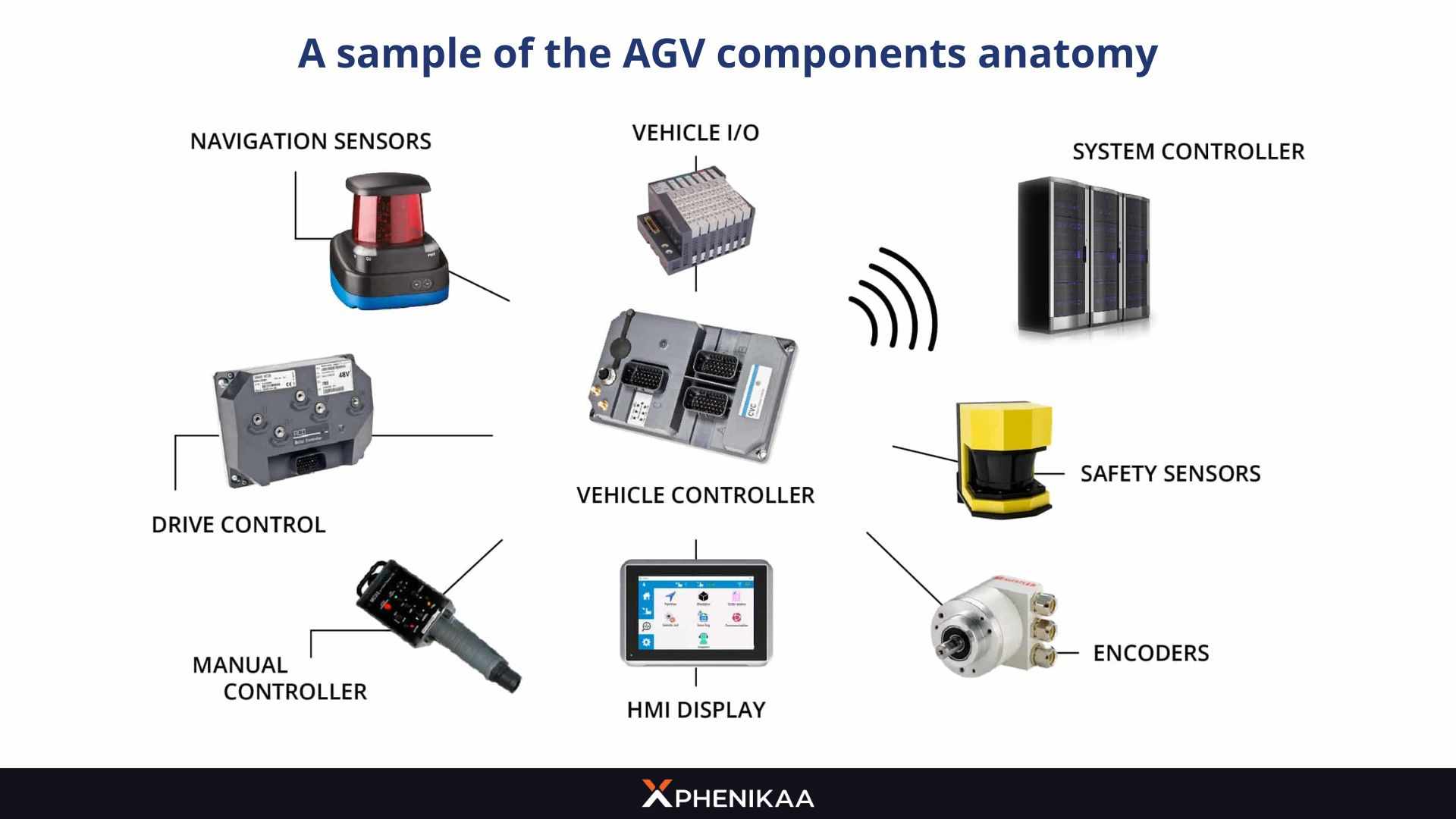
Each AGV component syncs with each other, providing the AGV ability to operate with precision, efficiency, and safety, transforming workflows by reducing manual labor and enhancing productivity. By understanding these components, businesses can appreciate how AGVs achieve reliability and adaptability, making them indispensable in automated environments.
AGV robots are deployed worldwide in diverse types, functionalities and configurations, offered by numerous manufacturers. This global variety results in a wide range of components tailored to specific applications, from heavy-duty manufacturing to agile warehousing. While the core components listed below—such as navigation systems, drive units, and safety sensors – form the backbone of most AGV, their design and implementation vary significantly across manufacturers due to differing operational requirements and technological approaches.
2. List of core AGV Components
AGV robot relying on a suite of components to achieve autonomous functionality. Each part is designed to tackle distinct challenges, from charting paths through crowded spaces to transporting heavy loads. Below, Phenikaa-X’s engineers split all the components into different groups that define AGV performance.
2.1. Navigation System
The navigation system acts as the guiding intelligence of an AGV, enabling it to traverse complex environments with accuracy. This technology determines routes, avoids obstacles, and adapts to dynamic conditions, ensuring uninterrupted operation. Several navigation methods are employed, each suited to specific scenarios:
- Laser-based Navigation (LiDAR): By emitting laser beams, AGVs map their surroundings in real time, detecting walls, equipment, or unexpected barriers. This method excels in flexible settings, such as warehouses with frequently changing layouts.
- Magnetic Tape or Inductive Wires: Embedded guides provide fixed paths, ideal for consistent routes in high-traffic areas like production lines, ensuring predictable movement.
- Vision-based Navigation: Cameras identify landmarks or coded markers, enabling AGVs to operate without physical infrastructure, a practical choice for smaller facilities.
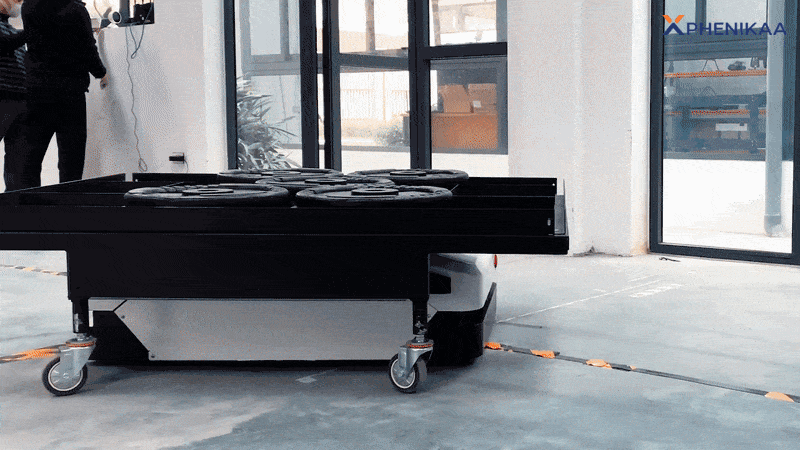
Advanced models use natural navigation, relying solely on environmental cues, which eliminates the need for costly modifications and supports agile operations in modern factories.
2.2. Drive Unit
The drive unit powers an AGV’s mobility, converting electrical energy into controlled motion. Typically equipped with electric motors, this component ensures smooth travel across diverse surfaces, from polished warehouse floors to rugged industrial zones.
Normally, there are 02 part included in the drive unit:
- Differential Steering: Allows sharp turns in confined spaces, critical for navigating narrow aisles in storage facilities.
- High-Torque Gearboxes: Enable the transport of loads ranging from 50 kilograms to several tons, accommodating everything from electronics to automotive parts.
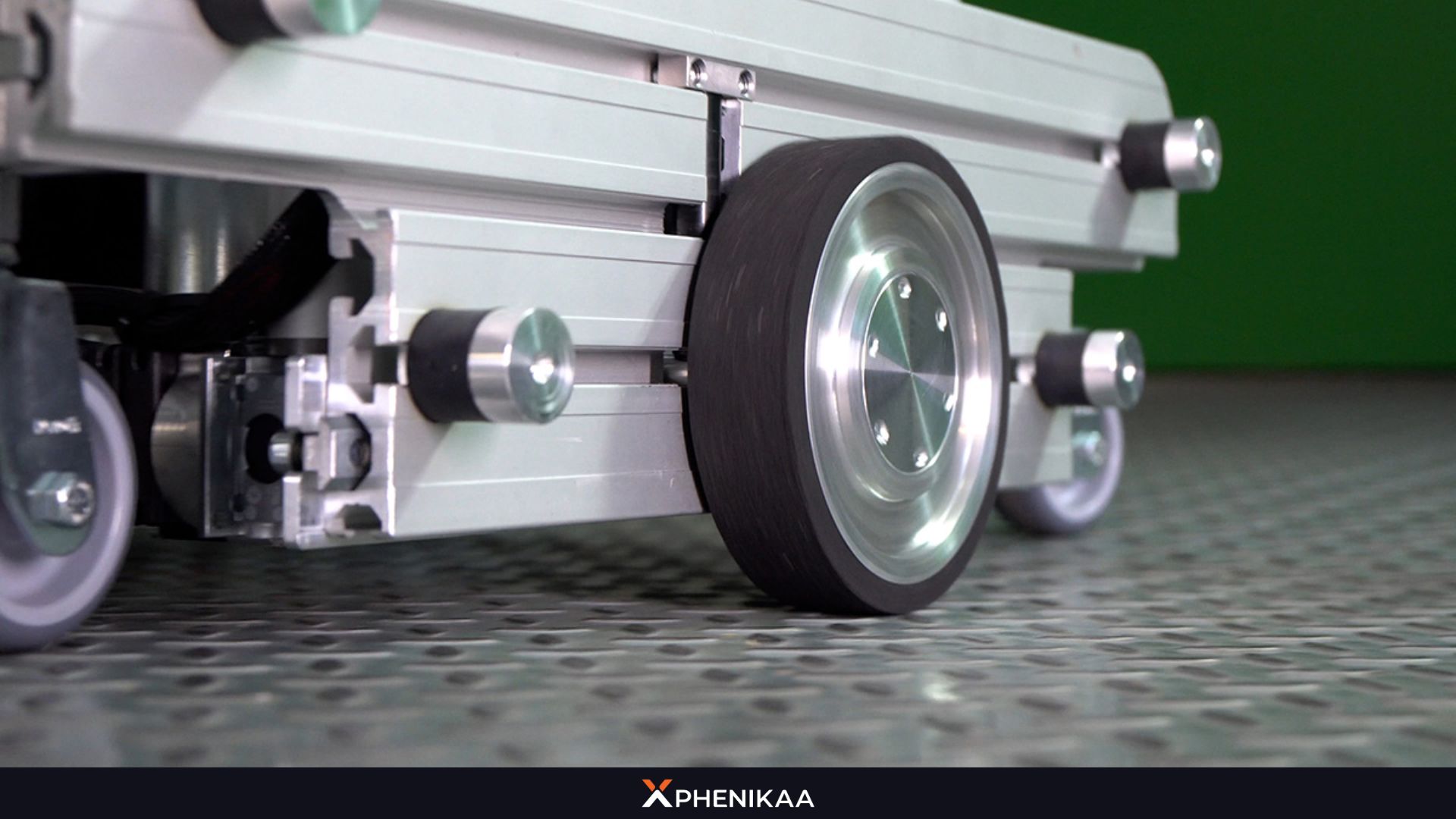
This unit’s precision ensures AGVs maintain stability and speed, delivering goods efficiently regardless of payload size or environmental constraints.
2.3. Chassis/Frame
The chassis serves as the structural backbone, supporting payloads and enduring operational stresses. Crafted from robust materials like steel or aluminum, it balances strength with weight to optimize performance. Designs vary to match specific tasks:
- Low-Profile Frames: Streamlined for cart-style vehicles, these slip under racks to retrieve goods in e-commerce hubs.
- Heavy-Duty Structures: Reinforced for tugger models pulling multiple trailers, common in large-scale manufacturing.
For instance, chassis tailored for automotive applications handle oversized components, ensuring stability during rapid transport across expansive plants.
2.4. Battery and Power System
A dependable power system is vital for continuous AGV operation, supplying energy to all components. High-capacity batteries ensure long runtimes, while innovative charging solutions minimize disruptions:
- Lithium-Ion Batteries: Deliver extended cycles and fast recharging, supporting round-the-clock operations in demanding environments.
- Charging Options: Range from manual battery exchanges for smaller fleets to automated docking stations or inductive paths for seamless energy replenishment in large setups.
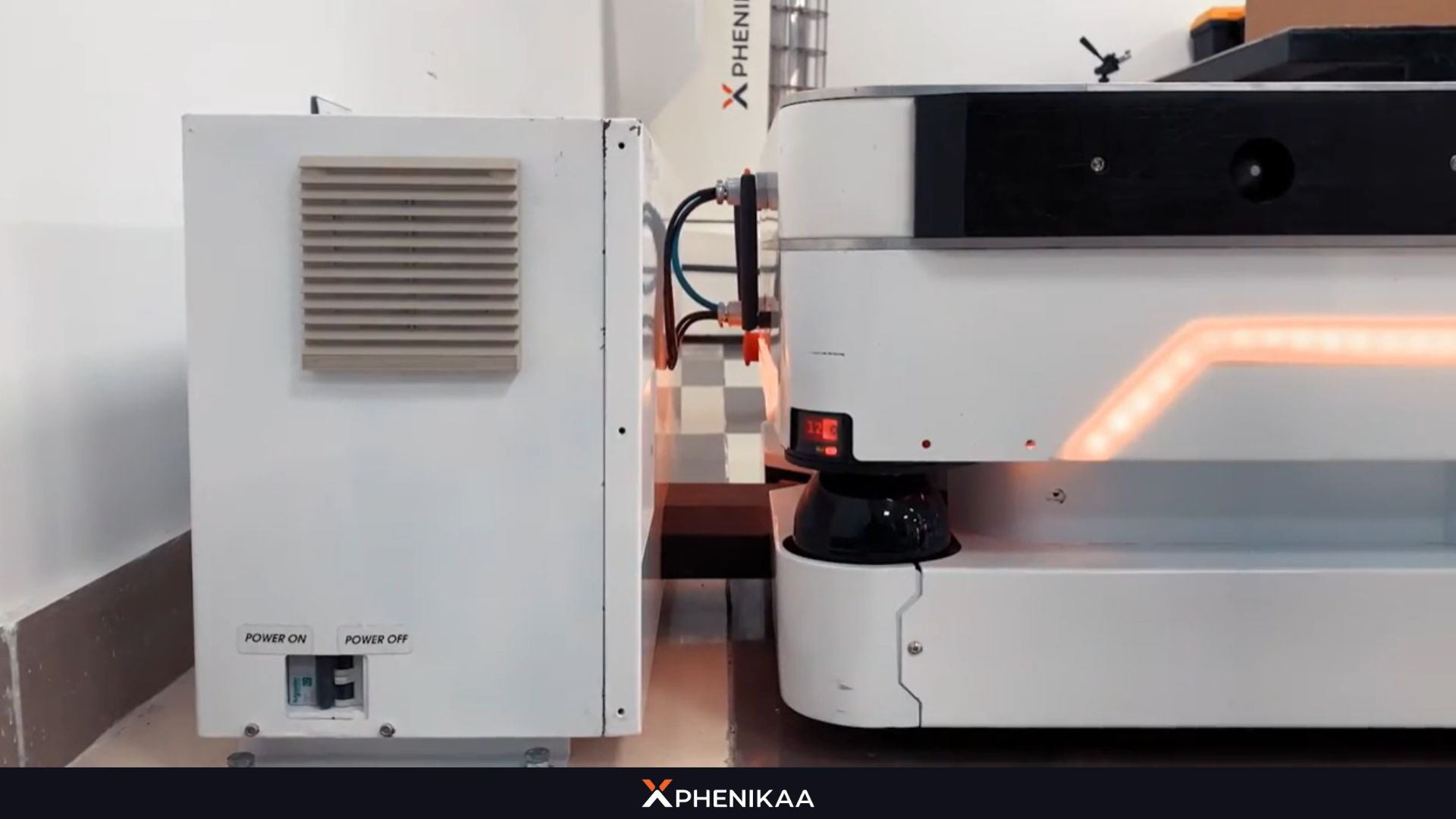
Effective power management is crucial, particularly in industries like logistics, where downtime can delay critical shipments of time-sensitive goods.
2.5. Safety System
Safety is a cornerstone of AGV design, ensuring protection for workers, cargo, and equipment in shared spaces. Comprehensive safety features include:
- Sensors: LiDAR, ultrasonic and camera systems monitor surroundings, halting or rerouting the vehicle to avoid collisions with people or objects.
- Emergency Mechanisms: Stop buttons and audible warnings provide immediate responses to potential hazards.
Compliance with standards like ISO 3691-4 ensures AGVs operate safely in busy settings, such as pharmaceutical facilities where precision and human safety are paramount.
2.6. Vehicle Controller
The vehicle controller functions as the central coordinator, processing data from all components to execute tasks flawlessly. It interprets sensor inputs, regulates movement, and communicates with external systems, offering:
- Real-Time Adjustments: Modifies speed or direction based on environmental feedback, ensuring smooth navigation.
- System Integration: Links with warehouse management software to prioritize assignments and optimize routes.
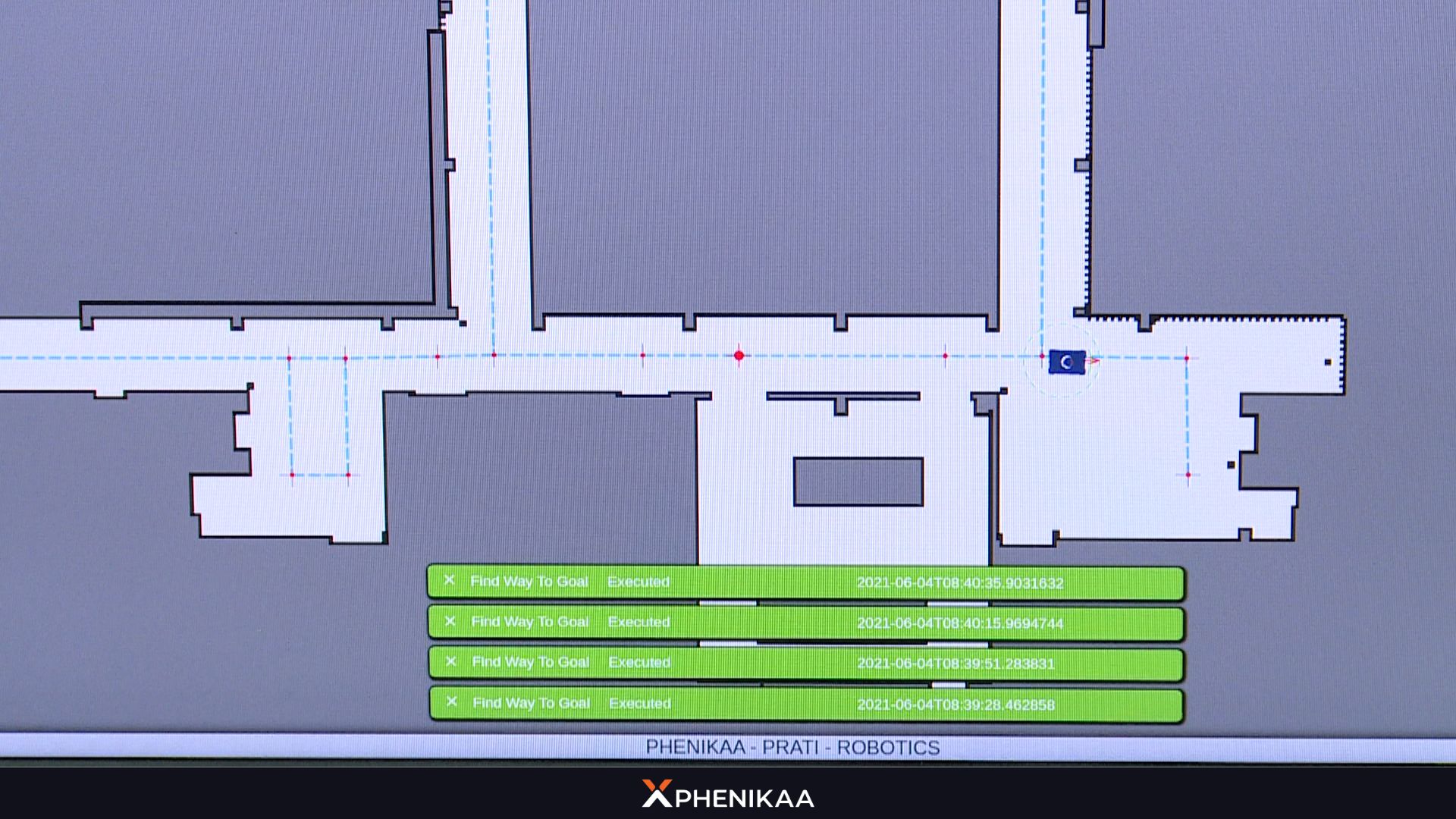
Controllers often feature diagnostic tools, enabling operators to monitor performance and address issues promptly, maintaining operational continuity. Operators can control the AGV through AGV software installed on tablets or PCs, helping manage the fleet more efficiently.
2.7. Load Handling System
The load handling system equips AGVs to manage materials efficiently, from pickup to delivery. Versatile mechanisms cater to diverse applications:
- Forks: Common in forklift-style AGVs, these handle palletized goods in distribution centers with ease.
- Rollers/Conveyors: Enable automated loading and unloading, ideal for high-throughput environments like sorting facilities.
- Scissor Lifts: Position loads ergonomically, assisting workers in assembly tasks.
Specialized tooling, such as grips for automotive frames, ensures precise handling of unique items, boosting productivity in tailored workflows.
You can learn more about each of the AGV technologies in the article AGV Technology Break Down: 05 Major Components, shared by Phenikaa-X’s Engineer.
3. How AGV Components Work Together
The strength of AGV lies in the seamless interplay of their components, creating a cohesive system capable of complex tasks, achieve autonomy.
Let’s take the navigation system and safety system as examples. The navigation system scans the environment, sends data to the AGV software, identifies a path that is most efficient to move. Safety sensors monitor for obstacles, help controlling the robot to stop if needed. All together, they create an autonomous system that corporate with each other and ensure safety in function.
About the load-handling system, the forklift AGV model will be the best suit example. The drive unit powers steady movement, while a custom fork system secures the load. Upon reaching the assembly line, the load handling mechanism deposits the block with accuracy, completing the task efficiently and safely, all without human intervention.
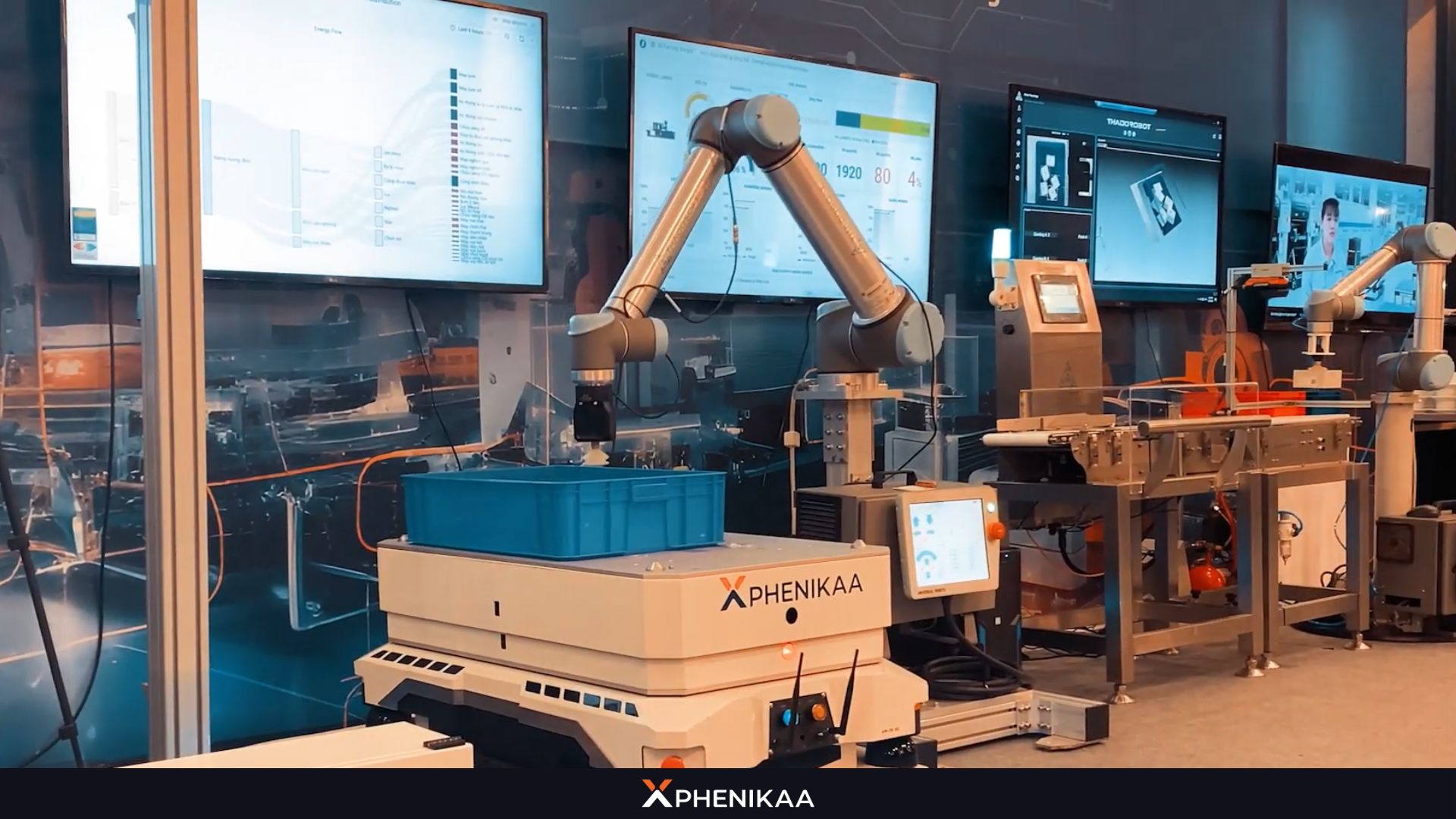
Each types of AGV will have their own specific modifications tailored to their intended applications, resulting in unique combinations of components to optimize performance. This customization ensures that navigation systems, load handling mechanisms, and safety features align with specific operational demands, enhancing efficiency and adaptability across diverse industries.
Conclusion
As automation continues to shape the industrial landscape, the components of AGVs will remain central to their evolution, driving advancements in efficiency and safety. Phenikaa-X is proud to lead this charge, delivering solutions that empower businesses to thrive in an era of intelligent material handling.
Phenikaa X is one of the best AGV and robotic solutions providers. Contact us today to learn more about integrating AMRs into your business:
- Facebook: https://www.facebook.com/phenikaa.x
- Hotline: (+84) 904530545
- Email: contact@phenikaa-x.com

